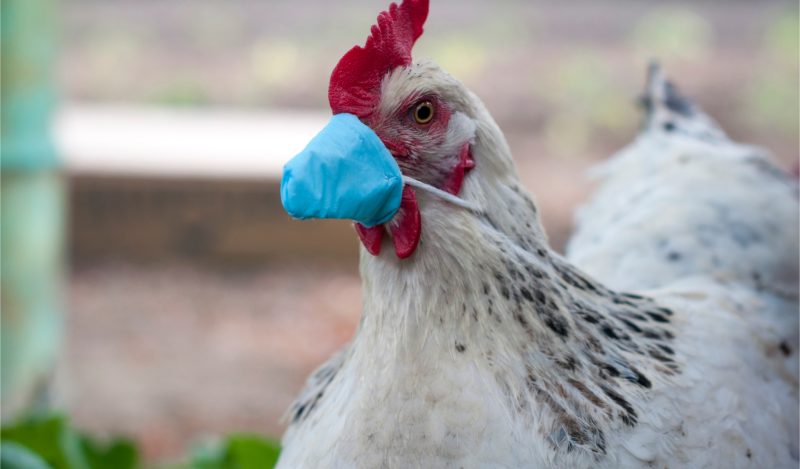People might think that disease panic plus extreme actions by governments are new, perhaps because the virus in question is new. The lockdowns in practice certainly were. Nothing like lockdowns in the face of a new virus has ever been attempted on this scale. It has been an experiment, one that growing numbers of people are willing to admit has been a failure.
However, the idea of deploying draconian methods to control a new virus had been circulating in political circles for at least 15 years before. The difference between our experience and theirs in 2005-06 is that they didn’t actually implement the policy. They warned. They threatened. They made all kinds of grand plans for controlling the population in the name of disease mitigation. But the policy never came to fruition.
The turning point in imagining what we now call lockdowns was 2005. George W. Bush was president. Having deployed shock and awe on Iraq, in an invasion of the country undertaken in some presumptive retaliation for 9-11, and also to dismantle weapons of mass destruction that no one ever found, Bush had adopted something of an apocalyptic outlook on his times.
What if there were a bioweapon deployed by one of these rogue states? How would it get here and what would we do? He demanded answers from his staff and they got to work. Among the answers given were a minority that rejected traditional public health practice of prudence, calm, and medical experience, in favor of a global strategy of human separation, massive quarantine, and total state control.
No surprise: President Bush was drawn to the latter idea, despite huge skepticism within public health circles at the time. He was also on the lookout for killer pathogens that might be sneaking into the borders, and to take big actions to combat them.
In the spring of 2005, news from Vietnam reported on an usual number of bird deaths. The strain was a new form – yes another new virus – of the endless mutating H5N1 bird flu. The great unknown was whether and to what extent it would affect the human population: thus far only 62 deaths in two years all over the world had been so attributed (whether with infection only or not). To be safe, the government of Vietnam ordered the killing of 1.2 million birds. Over time, 140 million birds in the region generally were either killed or died from the disease.
It was nowhere near reaching the US or the human population generally (and it never did) but the White House was in no mood for ignoring the precautionary principle. Imaginations ran wild: birds can fly anywhere they want, ignoring all travel restrictions and controls, potentially infecting the entire world in completely uncontrollable ways. Then as now, officials were absolutely rocked by the possibility of invasion by an enemy that they could neither see nor control.
The White House got busy with plans, holding meetings and soliciting advice from all departments in the government along with many private experts, including both traditional public health specialists plus the new form of disease modelers now competing for attention.
On November 5, 2005, Bush gave a press conference in which he released the pandemic plan (embedded below) to deal with an “unprecedented outbreak.” Though it no longer exists on the White House site, it is worth looking at again in light of later history. In fact, all the germs of lockdown can be found in this one document. At the time, not many people paid attention, as I recall. It seemed like just another round of white noise from the government. But within the halls of power, some people were very serious.
“Once again,” said Bush’s intro letter, “nature has presented us with a daunting challenge: the possibility of an influenza pandemic…. From time to time, changes in the influenza virus result in a new strain to which people have never been exposed. These new strains have the potential to sweep the globe, causing millions of illnesses, in what is called a pandemic. A new strain of influenza virus has been found in birds in Asia, and has shown that it can infect humans. If this virus undergoes further change, it could very well result in the next human pandemic. We have an opportunity to prepare ourselves… Together we will confront this emerging threat and together, as Americans, we will be prepared to protect our families, our communities, this great Nation, and our world.”
Among the points pushed in the plan:
- Preparing for a pandemic requires the leveraging of all instruments of national power, and coordinated action by all segments of government and society.
- Research and development of vaccines, antivirals, adjuvants and diagnostics represents our best defense against a pandemic. To realize our goal of next generation countermeasures against influenza, we must make significant and targeted investments in promising technologies.
- Where appropriate, use governmental authorities to limit non-essential movement of people, goods and services into and out of areas where an outbreak occurs.
- Provide guidance to all levels of government on the range of options for infection-control and containment, including those circumstances where social distancing measures, limitations on gatherings, or quarantine authority may be an appropriate public health intervention.
- Establishing an ethic of infection control in the workplace that is reinforced during the annual influenza season, to include, if possible, options for working offsite while ill, systems to reduce infection transmission, and worker education.
- Being prepared to follow public health guidance that may include limitation of attendance at public gatherings and nonessential travel for several days or weeks.
Along with that plan to limit mobility and bully the people came the predictions: a possible 1.9 million people dead and 10 million in the hospital, estimates made possible by newly fashionable computer models deploying sketchy assumptions. And also the demand for new budget allocations: $7.1 billion in the first request. Bush’s press conference on November 1, 2005, was a case study in how to create disease panic with very thin evidence:
“The virus has developed some characteristics needed to cause a pandemic: It has demonstrated the ability to infect human beings, and it has produced a fatal illness in humans. If the virus were to develop the capacity for sustained human-to-human transmission, it could spread quickly across the globe. Our country has been given fair warning of this danger to our homeland — and time to prepare.”
“An influenza pandemic would be an event with global consequences, and therefore we’re continuing to meet to develop a global response. We’ve called nations together in the past, and will continue to call nations together to work with public health experts to better coordinate our efforts to deal with a disaster.”
Over the next two months, the subject consumed the White House, with meeting after meeting, document after document, with the entire ethos driven by the same motivation that led to the lockdowns of 2020: slow and stop the spread, contain and defeat the virus. They were itching to try out all their new track and trace techniques, their mandates, their powers in general to control, some of which were influenced by the models put together by Robert and Laura Glass from a high-school science project.
By January 2006, H5N1 had been blamed for several child deaths in Turkey. The alarm machine kicked in. The tone was perfectly set by a media apparatus that had only recently discovered the capacity for pandemic threats to drive ratings.
On March 15, 2006, ABC News ran a story quoting virologist Robert G. Webster, the world’s leading authority on the Avian bird flu. “Society just can’t accept the idea that 50 percent of the population could die,” he said. “And I think we have to face that possibility.”
Hey, the world’s leading expert says so! He further added that he has started storing a three-month supply of food and water in his home.
There was the inevitable Anthony Fauci, who told Bill Moyers in September the following:
Well, Americans need to know that it is a threat, a real threat. It is an unpredictable infection, a pandemic flu, which really means a kind of flu to which the American public or the whole world, the global population has not been exposed to before. It is very different from the seasonal flu. … Right now there have been 112 cases in people with 57 deaths. So that’s about a 50 percent mortality.
There we go again with the claim that half the people could die! As the months rolled on, there were rising reports of sporadic deaths but a tremendous number of reports of bird infections and deaths: Cambodia, Nigeria, China, Indonesia. And the panic machine went into effect, with health officials around the world imagining worst-case scenarios. By October, policy circles in the US were consumed with fear, and the media got into the action.
“Two top federal health officials said that the H5N1 virus has already acquired five of the 10 genetic sequence changes associated with human-to-human transmission of the 1918 virus,” said a New York Times editorial with an air of infallibility. It’s science! “That does not necessarily mean that catastrophe is imminent,” they said reassuringly. “Nobody knows whether the avian strain now under the spotlight will become a big threat to humans. But some day a potential pandemic strain will arrive.”
In the end, nothing happened. The grand plan for national power was never deployed because there never emerged a plausible rationale for doing so. Today, the CDC doesn’t even list the appearance of H5N1 bird flu of 2005-06 as a pandemic at all but rather a mere outbreak, among birds.
In addition, we know now that this particular strain has been around since at least 1959. It killed no one in the US and only a few hundred deaths globally were attributed to the strain, maybe. Clearly, the strain stayed in birds. All the money, all the preparations, all the warnings and plans for closures and quarantines were for naught, blessedly for humanity at the time.
If they tried to generate panic based on next to nothing in 2005-06, people should have asked at the time, what will they do when something real comes along? It took 15 years but now we know.
birdflu-plans
Published under a Creative Commons Attribution 4.0 International License
For reprints, please set the canonical link back to the original Brownstone Institute Article and Author.









